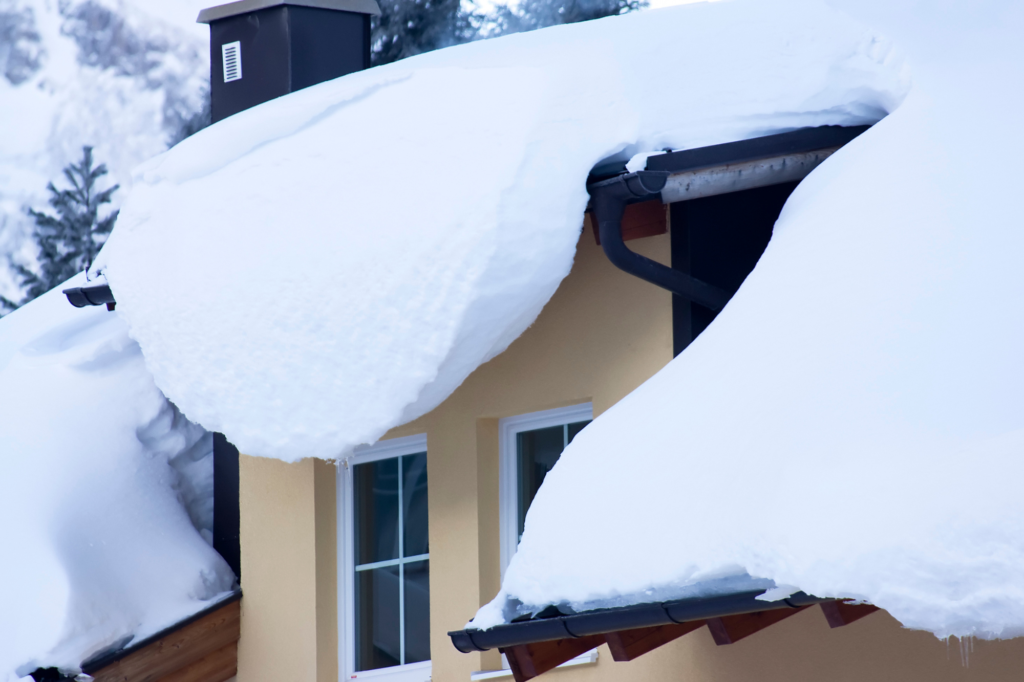What To Do if Your Roof Is Covered With Snow

Living in Minnesota means you will never need to worry about hurricanes or haboobs. You will never hear a tsunami warning, and you will unlikely experience an avalanche. Instead, Minnesotans live with brutal winter conditions, such as below-freezing temperatures, freezing rain, sleet, and heavy snow.
A snow covered roof with long, skinny carrot-shaped icicles hanging from the edges makes a great photo op, but too much snow can cause catastrophic damage.
If you prepare your home for winter, it’s possible to reduce the risk of a snow damaged roof. Read on for tips on what to do when too much snow accumulates on top of your house.
Prep Your Roof for Snow
Before the first snowfall, savvy homeowners have a plan to prevent a snow damaged roof. When you prepare your home for winter, you protect your roof and help prevent overall damage to your home.
Winter roof prep should include the following:
- Inspect the roof from the ground
- Check gutter system
- Schedule a professional roof inspection
It’s also a good idea to monitor the weather. Knowing how much and what type of snow to expect prevents you from being caught off-guard.
How Too Much Snow Can Damage Your Roof
Snow and ice—even in small amounts—can cause severe damage to your roof. Here are some ways that winter weather can impact your roof and the rest of your home:
- Damaged shingles
- Broken gutters
- Ice dams
You may not see any of these issues. Several inches of snow can hide damaged shingles. Many homeowners do not even realize they have a problem until spring arrives and they notice the roof leaking.
The heavy weight of ice and snow on a roof also causes stress. The roof can cave in if you allow the snow to accumulate.
Should You Clear a Snow-Covered Roof?
Most homeowners wonder how much snow a roof can handle. The good news is that most residential roofs can take the average snowfall.
Your home builder designed your home, including the roof, to meet the expected snow loads in your area. In Minnesota, the snow load for residential structures is 42 pounds per square foot (PSF) in northern Minnesota. In southern Minnesota, it’s 35 PSF.
Generally, a well-constructed roof can handle the usual amount of snow. That does not mean you should let snow accumulate. Many Minnesota homeowners keep a snow rake handy, but it is not advisable to rake off the snow unless you are removing all the snow from the roof plane.
If snow is only removed from the lower section of the roof, ice dams will potentially form. These ice dams will form where snow stops on the roof plane as this is where the cold air freezes water that is insulated by the snow on the roof.
Another problem over-zealous homeowners run into when removing snow from the roof is that they try to remove the bottom layer of ice. It’s usually sealed on the roof, and removing it may cause serious shingle and roof damage.
Contact Us About Winter Roof Safety
If you prepare your roof for winter, you should be able to weather the season without too many problems. To avoid roof damage, have your roof inspected by a professional at least once a year.
Pay attention to the weather, but also keep an eye out on the exterior and interior of your home for clues that you may have too much weight on your roof.
To schedule a roof inspection, if you need help with a snow covered roof, contact the experts at Garlock-French Roofing. With over 80 years of experience, there isn’t a roofing issue we haven’t handled.

